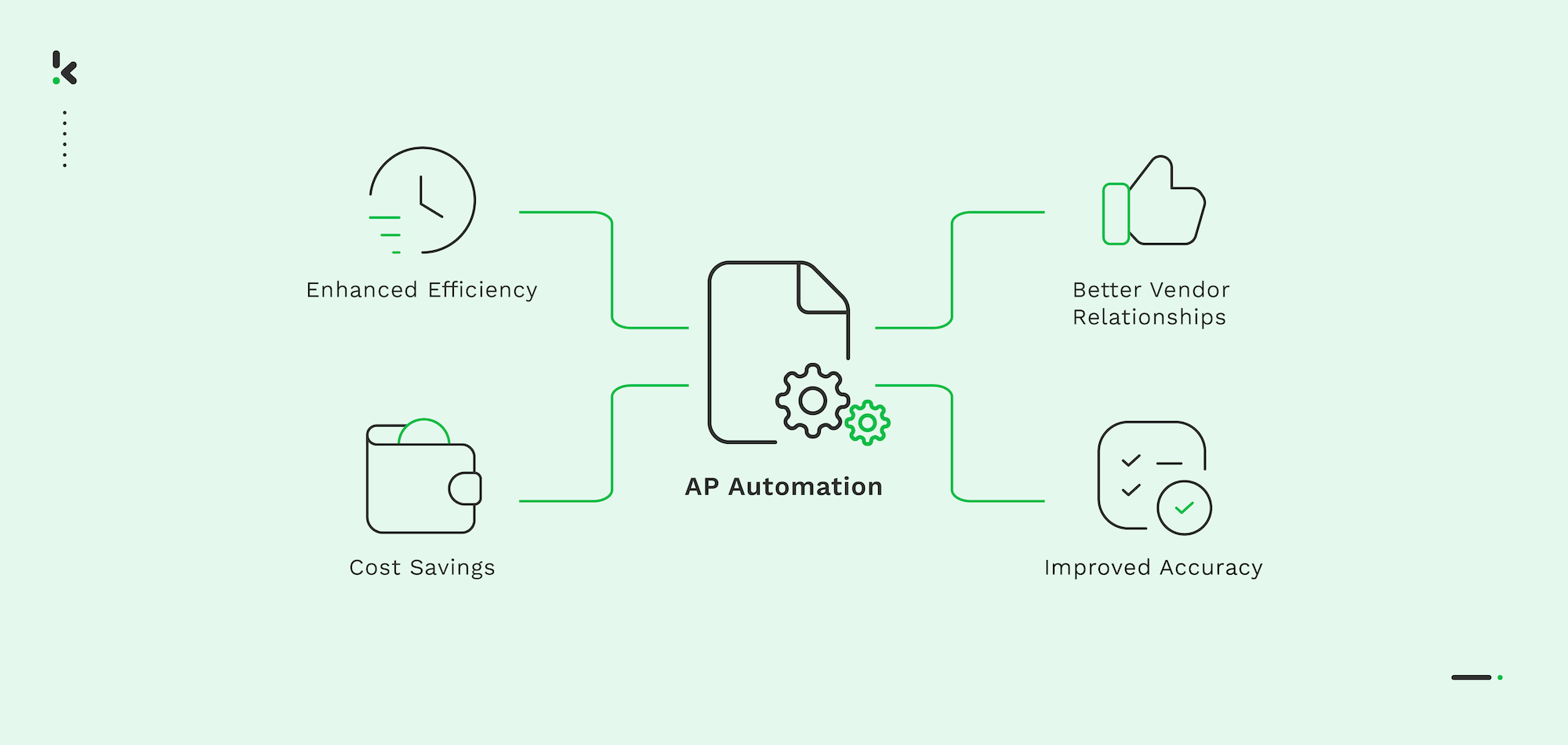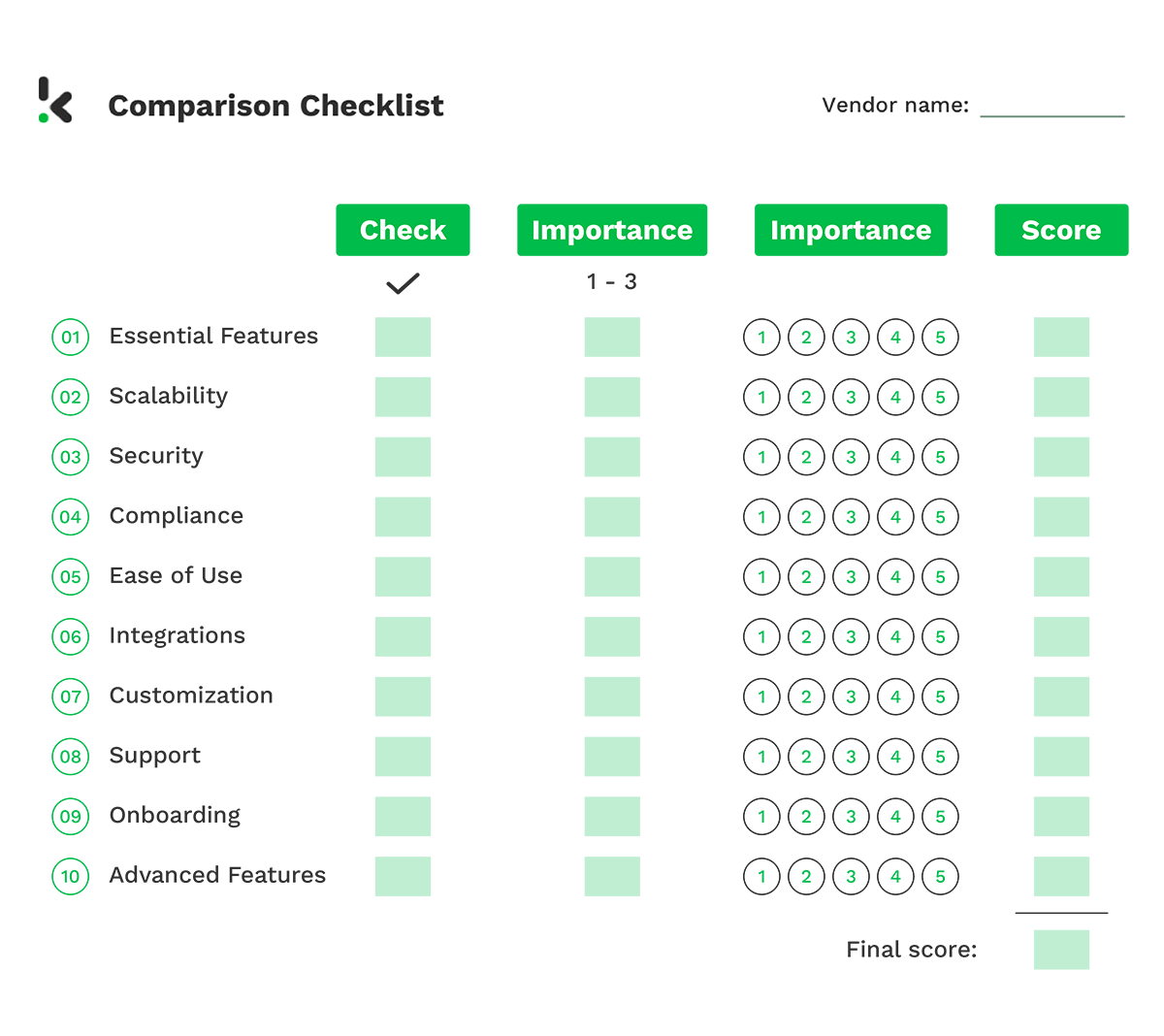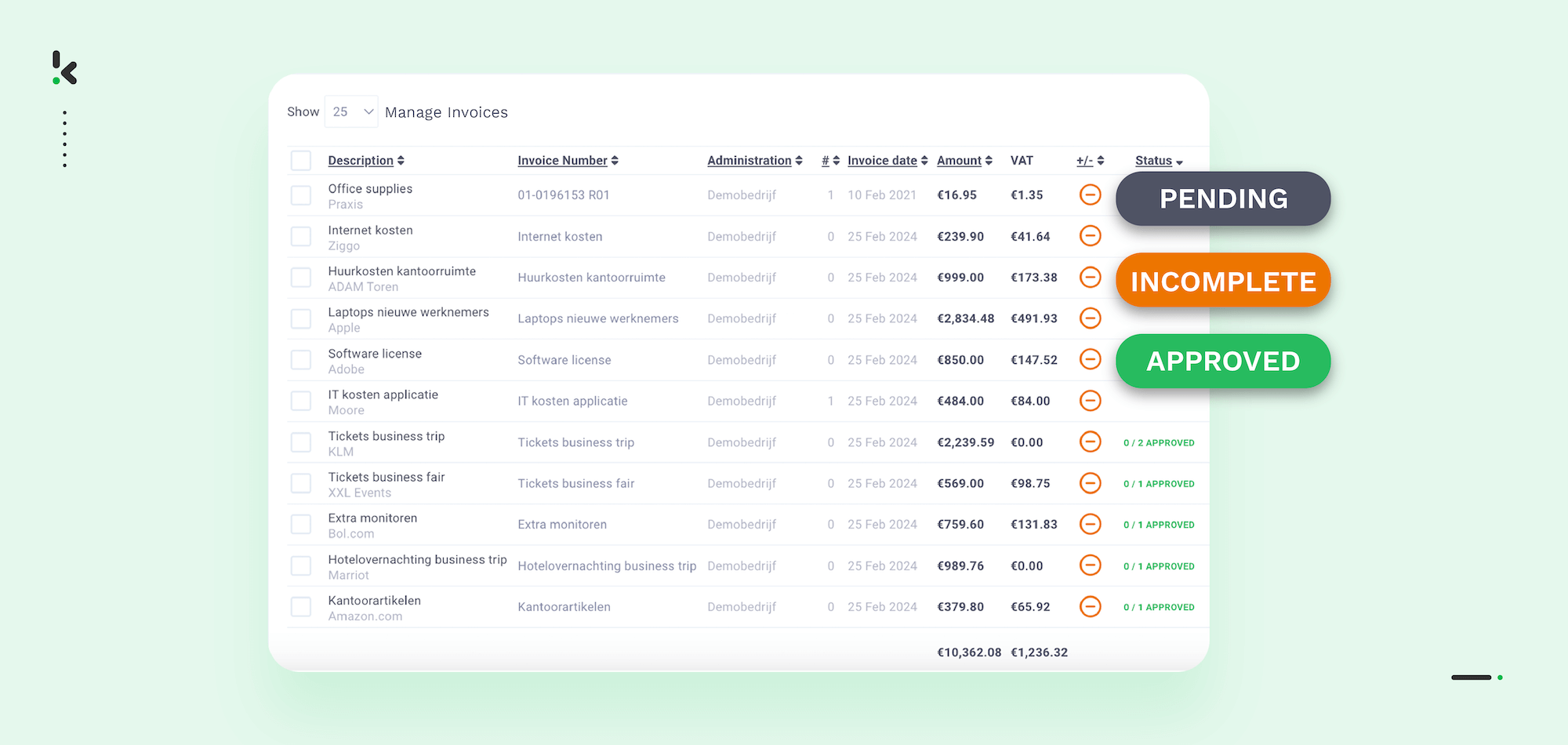

Managing accounts payable (AP) is often a complex challenge for finance teams, filled with manual tasks, tight deadlines, and the potential for high-stakes errors. These processes are vital yet frequently inefficient, affecting the financial health of many organizations.
AP automation offers a solution, transforming this critical function with advanced technology like OCR and machine learning. It facilitates invoice processing, enhances accuracy, and accelerates payments, aligning the operational importance of AP with significant, immediate benefits like cost and time savings.
In this blog, we’ll explore the advantages of invoice and AP automation, tackle common challenges, and guide you through selecting the right automation solution. Discover how to simplify your AP process, improve vendor relationships, and gain strategic financial insights.
Key Takeaways
- AP Automation streamlines invoicing and payment processes – Technology automates tasks like data entry, approvals, and payments, reducing manual effort.
- AP automation lowers operational costs significantly – Traditional AP processes can cost $15-$40 per invoice, while automation can reduce these costs by up to 81%.
- Klippa SpendControl centralizes AP processes – Invoice processing and expense management are unified in one solution for better organization and control.
- Enjoy automated compliance with financial regulations – Klippa ensures compliance with country-specific reporting standards without manual intervention.
What is AP Automation?
Accounts payable (AP) automation refers to the technology-based approach to managing and processing a company’s invoices and payments to vendors or suppliers without manual input. By automating the accounts payable process from invoice to payment execution, businesses can reduce costs, minimize errors, and enhance operational efficiencies.
Generally, AP automation leverages technology like Optical Character Recognition (OCR), Artificial Intelligence (AI), and machine learning, which allow companies to digitize and automate the entire accounts payable workflow, ensuring that invoices are captured, processed, and paid with precision and speed.
Exploring accounts payable automation highlights its advantages and correlation to the best practices in modern AP management, making the drawbacks of manual processes more apparent. As we transition to discussing these challenges, it becomes clear that adopting automation is not just a tech upgrade — it’s a strategic move towards a more efficient and error-free invoice management system.
Why Should You Automate Your Accounts Payable?
For many finance specialists, managing accounts payable often means dealing with piles of invoices, pressing deadlines, and time-consuming, stressful processes that are crucial to the company’s financial health.
If we look back at 2024, we can see a new shift taking place: more and more businesses choose to automate their processes, especially in the accounting department. 2024’s most important insight is that 64% of companies have automated at least some part of their AP processes.
Why such a radical change, you might wonder. To understand the reason, we need to break down the manual accounts payable process.
Simply put, it starts with you receiving paper invoices and needing to enter their data into your accounting software. Then, you must send reminders and wait for approvals. You must also pay the invoices, ensure they match up with your purchase orders, and finally, integrate them into your bookkeeping.
This tedious process itself is reason enough to automate your AP workflows, right? Let’s see what other challenges you might face when having a manual AP process.
Challenges of Manual AP Processes
The most common challenges you might face are:
- Human errors. The possibility of human errors, such as typos, miscalculations, and the accidental processing of the same invoice twice, can significantly affect operational efficiency. These errors require additional time and resources to fix. Not to mention, there is a risk of undetected invoice fraud.
- High operational costs. Manual processing of invoices is inherently expensive, estimated to cost between $15 and $40 per invoice, increasing even further with the risk of human mistakes.
- Disorganized data. The lack of a centralized tracking system can lead to an additional interruption in your workflow. If the responsible employee is unavailable, the rest of the team is left uninformed, which may result in late payments, poor supplier relationships, and late payment fees.
Considering all these, it’s obvious that AP’s critical role frequently clashes with how messy and risky manual AP processing can be. By automating them, companies can start turning accounts payable into a strategic advantage instead of them being a burden.
How to Automate Your AP Workflow?
Choosing to automate your accounts payable process is a strategic move towards improving efficiency and accuracy within your financial operations. Our guide outlines the critical steps for transitioning to an automated AP workflow, from assessing your current processes and setting clear objectives to selecting the right solution and ensuring seamless integration.
By following this structured approach, you’ll be well-equipped to reduce manual efforts, minimize errors, and allow your team to focus on higher-value financial tasks, enhancing your organization’s overall productivity and financial integrity.
Step 1: Assess and Analyze Your Current AP Process
Start with a thorough assessment of your existing AP workflow. Identify all manual tasks, from invoice receipt to payment execution, pinpointing bottlenecks and inefficiencies. This foundational step lays the groundwork for understanding where automation can bring the most significant benefits.
Step 2: Set Clear Objectives for Automation
Define specific, measurable goals for your AP automation project. Whether it’s reducing processing costs, minimizing errors, speeding up invoice processing, or improving vendor relationships, having clear objectives guides your strategy and helps measure success down the line.
Step 3: Explore and Select an AP Automation Solution
Investigate various AP automation solutions, focusing on features, scalability, user interface, and compatibility with your existing systems. Prioritize solutions that integrate with your current ERP, ensuring a smooth transition and uninterrupted data flow.
Step 4: Plan Your Implementation Strategy
Develop a detailed implementation roadmap, outlining key milestones, timelines, and responsibilities. Effective planning mitigates potential disruptions and sets clear expectations for all stakeholders involved in the transition.
Step 5: Ensure Seamless Integration
A crucial step in the automation journey is integrating the new system with your existing financial software. This integration should maintain data integrity and continuity across platforms without compromising functionality.
Step 6: Conduct Thorough Testing and Training
Before going live, rigorously test the new AP system to ensure it meets all functional requirements. Train your team on how to use the new system effectively. Comprehensive training reduces resistance to change and ensures a higher adoption rate across the organization.
By following these steps, you can transform your AP process, reducing manual labor, minimizing errors, and freeing up your team to focus on strategic financial management tasks.
Benefits of Automating AP Processes
Here is a list of the most relevant benefits companies can have after deciding to automate their accounts payable:
- Cost Savings. By automating accounts payable, companies can see up to an 81% decrease in processing costs and allow for the reallocation of resources to more critical areas of the business.
- Improved Accuracy. The 99% precision of AP automation solutions drastically reduces human error, ensuring every transaction is executed correctly.
- Enhanced Efficiency. Automation speeds up every step of invoice processing, from data entry to payment. Companies that use AP automation can experience up to a 73% improvement in efficiency.
- Better Vendor Relationships. AP automation’s reliability is key to avoiding late-payment penalties, receiving early-payment discounts, building lasting partnerships, and offering competitive advantages in negotiations and supply chain management.
- Strategic Insights. The real-time visibility into accounts payable processes allows companies to easily prepare reports, like month-end or year-end, with all AP data securely stored and easily accessible in one centralized environment.
- Clear Audit Trails. AP automation generates a detailed, real-time digital audit trail by meticulously recording each phase of every transaction. This allows auditors and reviewers to confirm the precision and adherence of financial records quickly.
In the end, AP automation does so much more than just improving processes. It makes everything go smoother, from operations to supplier relationships. Your business’s long-term success has now become something achievable. But how exactly does a small change like AP automation make all this happen?
How Does AP Automation Work?
AP automation streamlines the accounts payable process through the following steps:
- Digital Capture of Invoices:
- Use of OCR to convert paper invoices into electronic formats.
- Electronic invoices can be directly imported into the system.
- Workflow Automation:
- Invoices are routed through a predefined approval workflow.
- Automated matching against purchase orders and receipts to ensure accuracy.
- Approval and Payment Scheduling:
- Once an invoice is approved, the system schedules payments automatically.
- Relevant financial records are updated in real time.
- Automated Notifications and Reminders:
- Automated reminders keep the process on track.
- Reduces the risk of late payments and associated penalties.
- Real-Time Visibility:
- Provides real-time status updates on invoices and payments.
- Facilitates better cash flow management and reporting.
Overall, AP automation reduces manual data entry, minimizes errors, and accelerates the accounts payable cycle, enhancing efficiency and accuracy.
Which Accounts Payable Tasks to Automate?
The effectiveness of accounts payable workflow automation depends significantly on the specific tasks you choose to automate. Automating key areas of the AP process can dramatically reduce manual input, thereby enhancing efficiency, accuracy, and the overall financial health of your organization.
Let’s see which tasks within the accounts payable workflow stand out as particularly beneficial when automated.
Invoice Capture
Accounts payable automation starts with converting paper or e-invoices into structured digital data. By utilizing OCR technology, the AP automation solution automatically captures invoices by scanning, categorizing, organizing, and converting text or images into a digitized format such as PDF, JSON, CSV, XML, etc.
Data Entry
The AP automation solution utilizes AI-powered data extraction, allowing it to recognize crucial information from invoices, such as the due dates, the amount payable, and vendor details, ensuring the extraction of all the essential data and eliminating the need to go through every single invoice manually and manually enter data into the system.
Invoice Matching
AP automation solutions often include two-way matching as well. The system automatically compares invoices with purchase orders or delivery notes, ensuring the accuracy of the agreed-upon order. Any discrepancies are flagged for review, while cleared-out invoices are routed for approval or immediate payment, enhancing accuracy and preventing overpayments.
Approvals
Automated approval workflows utilize predetermined business rules to route invoices to authorized personnel for review or allow automatic approval of invoices of a set category, like an amount, vendor, or project. This not only accelerates the approval process but also provides a clear audit trail and reduces bottlenecks.
Fraud Detection
Leveraging sophisticated algorithms, AP automation tools can identify unusual patterns, like trails of invoice data modification, that may indicate fraudulent activity in accounts payable, adding an essential layer of security to your financial processes.
Compliance
Automation ensures that all transactions comply with internal policies and external regulations. It simplifies the invoice management system, making it easier to adhere to compliance requirements and audits internationally.
Payment
Solutions connected to payment or banking platforms allow the scheduled or immediate reimbursement of approved invoices by selecting optimal payment methods tailored to each vendor’s contractual terms. This system helps companies in capturing early payment discounts and avoiding late payment fees.
Reconciliation
Automated payment reconciliation compares recorded transactions against bank statements, quickly identifying discrepancies, ensuring the accuracy of all transactions, and simplifying the financial close process.
Reporting
Automation provides comprehensive and real-time visibility into the AP process, generating detailed reports that help track performance, provide insights into cash flow and payment patterns, and allow businesses to have a complete overview of the company’s financial health.
Analysis
Beyond mere reporting, AP automation offers deep analytical insights into spending patterns and potential process improvements. This enables strategic decision-making and helps optimize the overall AP processing.
By automating these tasks, businesses can significantly reduce the time and effort associated with manual AP processes. This shift allows teams to concentrate on strategic activities that directly contribute to organizational value, among other benefits.
Essential Features to Look for in AP Automation Solutions
Choosing the right AP automation solution is crucial for advancing the many tasks involved in managing accounts payable. With so many options available, finding the perfect fit for your organization can be overwhelming. To simplify this decision, we’ve put together a guide highlighting the key features and factors you should consider:
Basic Attributes: Look for solutions with functionalities such as electronic invoice capture, automated approval workflows, and real-time reporting. These features are essential for AP automation!
Scalability: Opt for a solution that can accommodate your business’s growth and is capable of efficiently handling an increasing volume of transactions without compromising performance. Research which types of companies each solution is aimed at and inspect limits on the volume of invoices processed in subscription plans.
Security and Compliance: When selecting an AP automation solution to ensure it is safe, secure, and compliant, consider a comprehensive set of criteria that cover security certifications, data protection standards, and regulatory compliance. Here are key factors to look for:
- ISO 27001 Certification: A globally recognized standard for the management of information security.
- SOC 1 and SOC 2 Type II Attestations: Reports that assure control environments as they relate to the retrieval, storage, processing, and transfer of data.
- GDPR Compliance: Standards for the protection of personal data in the European Union and the transfer of personal data outside the EU.
- End-to-End Encryption: Robust encryption to protect sensitive financial data from unauthorized access.
- Regular Security Audits: The provider should conduct regular security audits and penetration testing to identify and remediate vulnerabilities.
Ease of Use: A user-friendly interface is vital for facilitating smooth adoption by your team, minimizing training time, and enhancing productivity from the get-go. Request a live demonstration of the solution or opt for free trials to test it within your team before finalizing the purchase.
Integration Capabilities: Integration with your current ERP and accounting software is essential for maintaining a unified financial ecosystem, ensuring end-to-end process automation. Check plug-and-play integration options or the possibility of a custom-built API connection.
Customization: Assess whether the solution offers customization options that cater to the unique needs and workflows of your company, allowing for a more tailored and efficient AP process. Here are several examples of such customization options:
- Invoice Approval Workflows: Customizable workflows that match the company’s internal approval hierarchy, allowing for the setup of multiple approval tiers based on invoice amounts, departments, or project codes.
- Custom Fields and Data Capture: Options to create custom fields on invoices and other documents to capture specific information important to the business, such as project codes, cost centers, or budget codes.
- Region Compliance and Security Settings: Customizable compliance and security features that ensure the system adheres to industry- and country-specific regulations, including data retention policies and access controls.
Support and Onboarding: A seamless transition to an automated AP requires robust support and a well-structured integration plan. Your inquiries should include whether the solution includes a dedicated account manager and implementation assistance, as well as whether it ensures round-the-clock technical support via phone, email, or access to a detailed online manual.
Advanced Attributes: Consider whether the solution leverages OCR, AI, and machine learning for enhanced data capture and analysis. Explore if it includes additional modules for invoice and expense processing or credit card payment processing to potentially further automate and streamline your financial operations.


Choosing the right AP automation solution involves thoroughly analyzing your current processes, future needs, and the specific features that will improve your accounts payable operations. By prioritizing these factors, you will discover a solution like Klippa SpendControl that optimizes your financial workflows and provides strategic value to your company.
AP Automation with Klippa SpendControl
Forget the tedious AP process by automating your accounts payable with Klippa SpendControl. Our intuitive pre-accounting software combines all the essential features to reduce manual input from your accounts payable workflow.


Transform text and images into digital data, approve vendor invoices through custom workflows, detect errors and fraud, and comply with regulations, all within one dedicated platform. Improve supplier relationships while saving precious time and reducing manual labor.
Klippa SpendControl provides access to crucial features for your accounts payable automation:
- Invoice processing and expense management modules are available in one centralized solution
- Corporate credit cards synced to our expense management software deliver total control over employee expenses, with direct reconciliation and booking
- Data extraction with our in-house developed OCR technology
- Automated compliance with country-specific financial reporting regulations
- Centralized financial data in one user-friendly expense dashboard
- Built-in fraud detection powered by machine learning
- Multi-level authorization flows for organized and accelerated approval processes
- Automatic foreign currency conversion for invoice processing from all regions
- Mobile & web environments with 24/7 access to your organized AP data
- Plug-and-play accounting and ERP software integrations
- Full support and onboarding by our product specialists
Do you want to automate your accounts payable? Are you looking for the ultimate solution for your company’s financial management? Book a free demo to see our product in action, or contact our SpendControl specialists for more information. Start investing your time in things that matter!
FAQ
If your business deals with many invoices, faces approval delays, or struggles with manual errors, then yes, AP automation is something for you! Automating these processes can improve efficiency, reduce costs, and minimize risks associated with manual accounts payable processes.
While there is an initial investment, AP automation can lead to significant cost savings by reducing manual processing expenses, minimizing errors, and optimizing resource allocation.
Vendors often provide comprehensive onboarding, dedicated account managers, and ongoing technical support to ensure a smooth transition and effective use of the AP automation system.
Yes, Klippa supports multi-currency transactions, automatically converting foreign currencies during invoice processing to accommodate international operations.
Klippa provides comprehensive support, including onboarding assistance, training, and ongoing customer service to ensure smooth implementation and continued satisfaction with their AP automation solutions.